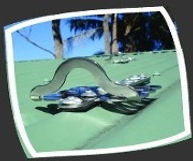
Central Coast Gutter c lean
Gutter Cleaning & Gutter Guard
Our Anchor Points & Safety Products on the Central Coast



Roof Anchor Points
At Central Coast Gutterclean we have sorted through all the options available on the market and selected the best and simplest available. The range we use are our first choice as they are the best in their class for anchor points and safety systems.
There are a number of reasons for this choice:
Energy absorbing feature
This is the single most important feature. In the past anchor points were large, unwieldy items that had to be installed around roof rafters, etc. The latest technology anchor points have a unique energy absorbing feature that ensures extra safety if an incident should occur. Instead of falling and stopping abruptly with standard anchor points, our range allow for absorption, effectively "cushioning" the fall and further reducing injuries if a fall is further than 1 or 2 meters. This feature also prevents damage to the structure or roof should an incident occur.
Easy to install
Since most installations will be on existing buildings it is important for any anchor points to be easy to install with no damage of the existing structure. Our entire anchor point range are easy to install, have little to no impact on the existing structure and can quickly be added without hassle. They are also less expensive, easier and faster to install than anchor points from yesteryear.
Ascetically pleasing
The range of anchor points we recommend have been designed to minimise visual impact when installed. A number of other anchor points stand out like the proverbial 'sore thumb'. Our range of anchor points are designed to fit in, under and around existing buildings and preserve the existing look. Hiding under tiles and seamlessly attaching to metal sheeted roofs they are small, neat, tidy and can hardly be seen from a distance.
Australian made & tested
Our range is designed and manufactured right here in Australia in accord with the Australian and New Zealand Standards of safety (namely AS/NZS 1891.4 and AS/NZS 1891.2) and are rigorously tested for our unique Australian weather conditions.
